Copyright 2021 by Richard O. Aichele - email richaichele@aol.com - and InforWorks.com |
World War 1 had five major naval battles -- Jutland, the Dardanelles, Dogger Bank, Coronel and the Falkland Islands that changed the path of the Great War and were never forgotten by the sailors on all sides who fought those battles. |
|
The Battle of Jutland involved 261 warships and lasted two days. This article is focused on the actions of the battle cruisers with their supporting cruisers and destroyers during this sea battle. |
|
British Navy Battle Cruisers HMS Tiger -- HMS Princess Royal -- HMS Lion at sea before the Battle of Jutland
British Royal Navy's Grand Fleet Battle Orders "The first duty of our battle cruisers is to destroy the enemy battle cruisers. It is incumbent upon them also at the commencement of an action to take up their battle station at the head of our line in order to frustrate any attempt on the part of the enemy battle cruisers to attack the van of our battle fleet with torpedoes at long range." |
|
German Battleships At Sea.
German Battle Cruiser SMS Seydlitz
The German High Seas Fleet sortied from port early on May 31, 1916. The German fleet with 110 warships was led by five battle cruisers: SMS Lutzow, SMS Derfflinger, SMS Sedylitz, SMS Moltke, and SMS Von der Tann. The British fleet with 151 warships was already at sea with two battle cruiser squadrons consisting of the HMS Lion, HMS Princess Royal, HMS Queen Mary, HMS Tiger, HMS New Zealand and HMS Indefatigable sailing at 25 knots about 60 miles ahead of the following battle ship formation. The fleets of navies had supporting destroyers, cruisers and submarines at sea. Within hours the battle Jutland began. At 14.00-hours on May 31, the leading ships of the two battle cruiser formations sighted each other. According to the SMS Seydlitz's commaning officer, Kapitän zur See Moritz von Egidy, "The British light cruisers came into view and behind them were dense clouds of smoke. Then tripod masts and huge hulls [of the British battle cruisers] loomed over the horizon. At 15.45-hour we opened fire." (Source note: Quotes of von Egidy from Warships & Sea Battles of World War 1). At 15.48-hour, the HMS Lion opened fire on the German ships. The British guns had a longer range than the German guns but in the early minutes the British had delayed firing and that allowed the German ships to get within range of their guns. Also having an immediate toll on the British was the "inaccurate shooting of the British ships, for in this period the German gunners secured four hits on the British line to every British hit on theirs," according to Commander John Irving's book The Smoke Screen of Jutland.. [1] page 65 As the two navies lines of battle cruisers sailing parallel fought, it was at times duels between individual ships. The HMS Lion was hit at 16.00-hour by a shell that penetrated the Q Turret. "It appears that all the occupants of the gun house proper, most of the silent-cabinet's crew, and most of the working chamber's crew situated directly below the gun-house were killed or severly wounded by the detonation of this shell in the gun-house. The seriously wounded Officer realized that his Q Turret was out of action and on fire. He was able to order the magazines to be flooded likely saving the ship. Minutes later the fire ignited cordite charges that were to be loaded into the guns. The resulting explosion killed the magazine handling-room crew and shell-room crews. Only the fact that the magazine had been quickly flooded saved this British battle cruiser from total destruction according to the H.M.S. Lion's Gunnery Officer.
Photo left: Cordite flames shooting out of the battle cruiser HMS Lion's destroyed "Q" turret roof (amidships).
At 16.01-hour, German salvoes from the SMS Von der Tann. hit the HMS Indefatigable followed by two more hits by 11-inch shells. "Within about 30 seconds the HMS Indefatigable completely blew up. The main explosion started with sheets of flame...stuff was blown high in the air. A 50-foot steam packet boat being blown up about 200-feet," according to an officer on the HMS New Zealand. An after battle report stated: "The salvo of three shots had fallen on her upper deck penetrating to the magazine. A second explosion rent her, she turned over and in a moment all trace of her was gone." The entire crew of 1,023 men was lost. On the SMS Seydlitz, von Egidy said,"We had not gone unscathed. The first hit we received was a 12-inch shell that struck Number Six 150 mm (5.9 inch) casement killing everyone there." Before the battle ended, the ship had been hit by 25 shells and one torpedo. C, B, D and E Turrets were all hit, and she was down at the bow due to flooding. As the battle raged the SMS Seydlitz and the SMS Derfflinger dueled with the HMS Queen Mary. "The German ships were receiving full salvoes from HMS Queen Mary with fanulous rapidity." according to a British report. Then twice the HMS Queen Mary was straddled by the SMS Derfflinger's salvoes and at 16.20 a plunging salvo crashed upon her deck forward. In a moment there was a dazzeling flash of red flame and then a much heavier explosion rent her amidships." von Egidy later recalled, "The HMS Queen Mary, our target, was blowing up. The spectacle was overwhelming, there was a moment of complete silence." The British battle cruisers were in line and minutes later the following HMS Tiger passed the site and an officer reported, "The forward part had alreday gone down. The stern was afloat from the aft funnel and the propellers still revolving out of the water, then the after portion rolled over and blew up."
Photo shows the HMS Queen Mary exploding and sinking while on the left another salvo from the German High Seas Fleet is falling around the H.M.S. Lion. A post-battle account by Petty Officer E. Francis of the HMS Queen Mary's "X" Turret that mounted 13.5 inch guns reported the ship was hit "by a heavy blow" and soon after "came the big explosion which shook us a bit" and "immediately after that came what I term the big smash. Everything in the ship went quiet as a church, the floor of the turret was bulged up and the guns were absolutely useless. I put my head up through the hole in the roof of the turret and I nearly fell through again. The after 4 inch battery was smashed right out of all recognition and then I noticed the ship had an awful list to port." As the surviving crew began to abandon ship, "I clamored over the slimy bilge keel and fell into the water. I struck away from the ship as hard as I could when there was a big smash...the air seemed to be full of fragments and flying pieces. I heard a rush of water...and I realized it was the suction or back-wash from our ship which had just gone." Most of the HMS Queen Mary's 1,266 crew men were lost. The events prompted the comment, "There is somethig wrong with our bloody ships today," by British Vice Admiral David Beatty. At 18.00-hour, Rear Admiral Hood's squadron of the HMS Invincible, HMS Indomitable and HMS Inflexible joined with the HMS Lion and remaining battle cruisers firing at the German ships at a distance of only 9,000 yards. The HMS Invincible, Hood's flagship, targeted the SMS Derfflinger and Hood complimented the gunnery officer Commander Dunnreuther saying, "Your firing is very good. Keep it as quickly as you can." On the SMS Derfflinger Commander von Hase later recalled "Several of their shells pierced our ship with a terrific force exploding with a tremendous roar which shook every every seam and rivet." The SMS Derfflinger was able to respond. The Royal Navy Narratives compiled from sailors' statements after the battle reported: "The enemy's shooting at this time was unpleasantly good, and I observed several salvoes burst alongside and I could hear the whistle of the 'overs.' They made two direct hits followed by a second full salvo that hit Hood's flagship near the center Q Turret." Photo below: Massive explosions destroyed the HMS Invincible
As the British battle ship forces came close enough to join the battle, the SMS Lutzow came under their heavy fire. An officer on the HMS Colossus reported two British battleships "concentrated on the ...SMS Lutzow. "We fired five salvos at her the range being 8,900 yards causing new fires. She turned away from us and disappeared into a smoke screen and the mist." Confusion At Windy Corner
Photo caption: HMS Princess Royal on left side. German shell splashes to right. HMS Tiger further to right. Several incidents were occuring simultaneously: the Grand Fleet was now well within sight and bearing down in six columns gradually deploying to port; the HMS Lion and the British battle cruisers heavitly engaged passing us to starboard at full speed and making a wonderful picture, a long cloud of smoke pouring out of a big shell hole in HMS Lion's superstructure forward. As numerous British light cruisers and destroyers attempting to reach their designated positions crossed the paths of other British ships collisions were narrowly avoided. Further complicating the situation was a decision by Rear Admiral Arbuthnot in charge of the 1st Light Cruiser Squadron to cross the paths of Beatty's battle cruisers to attack the disabled German light cruiser SMS Wiesbaden. The HMS Warrior from the 1st Light Cruiser Squadron narrowly escaped a collison with the HMS Lion. "The 1st Light Cruiser Squadron broke through the center of our squadron as we made to the eastwards. Rear Admiral Arbuthnot's Squadron then wheeled round to starboard on a westerly course and opened fire on a German light cruiser (the SMS Wiesbaden) which hove into sight on our starboard bow. Apparently Admiral Arbuthnot was anxious any enemy that might turn up and he pressed forward with great impatience. His squadron looked a very fine sight, turning and firing in succession but almost immediately they found themselves within close range of the German battle cruisers and battleships. Before they could turn away -- there was practically no direction clear to which they could turn and they were being concentrated upon by overwhelming gunfire from the enemy ships," according to a narrative from the HMS Yarmouth assigned to the 3rd Light Cruiser Squadron. Admiral Arbuthnot aboard the armoured cruiser HMS Defense had led the squadron's ships directly into the path of German battleships. The affects were immediate. The HMS Black Prince was heavily damaged, set on fire and sank several hours later with a loss of 820 crewmen. The HMS Warrior was also hit and drifted out of action helpless and in flames. At 18.20-hour, the HMS Defense was hit by several German salvoes including a hit to the 9.2 inch guns aft turret resulting in a flash down to that magazine causing it to explode. That flash flash travelled quickly through ammunition passages detonating another magazine for the nearby 7.2 inch guns. The ship sank instantantly killing the 903 man crew including Admiral Arbuthnot. The only ship of the squadron to survive was the H.M.S. Duke of Edinburgh which turned away northward in time. Four major British ships with a total of 4,208 crew members were lost in two and a half hours due to explosions of the ships' magazines. The HMS Defense was the fourth ship. . . . . Technical viewpoints and a video of a dive expedition onto the sunken HMS Defense and the HMS Invincible discussing magazine and explosives safety at sea can be found at this link. . . Jutland - Ships Doomed by Designs and Procedures |
|
The Guns Fall Silent The battle was over. Both navies sailed back to their home ports. An attempt to tow the HMS Warrior ended when the ship sank taking with it 849 crewmen. Several damaged British ships made their way to nearby British ports independently and other damaged ships and headed toward their homeports. The German SMS Lutzow was listing heavily and down at the bow and at 20.29-hour the ship could not maintain speed and was ordered to head for port independently. Finally at 02.45-hour, the severe flooding resulted in the order to abandon ship. Four destroyers rescued the 1,220 survivors included the wounded, then sent one torpedo to sink the SMS Lutzow and brought the sailors home.
Battered but afloat, SMS Seydlitz had brought her crew home to Wilhelmshaven. A tradition of Chivalry still existed in 1916 among British and German seamen. Commander John Irving wrote in The Smoke Screen of Jutland: "When the fleet learned later of the struggle that SMS Seydlitz had put up against the sea, most officers and men were glad that she had not been hunted down -- the general opinion was that she deserved to get home."
. . . . . . . . |
Information Works Inc. Great War Histories
Remembering the Missing -The Great War (1914-1918)
Revisit the Western Front 50 Years Later
|
|
|
|
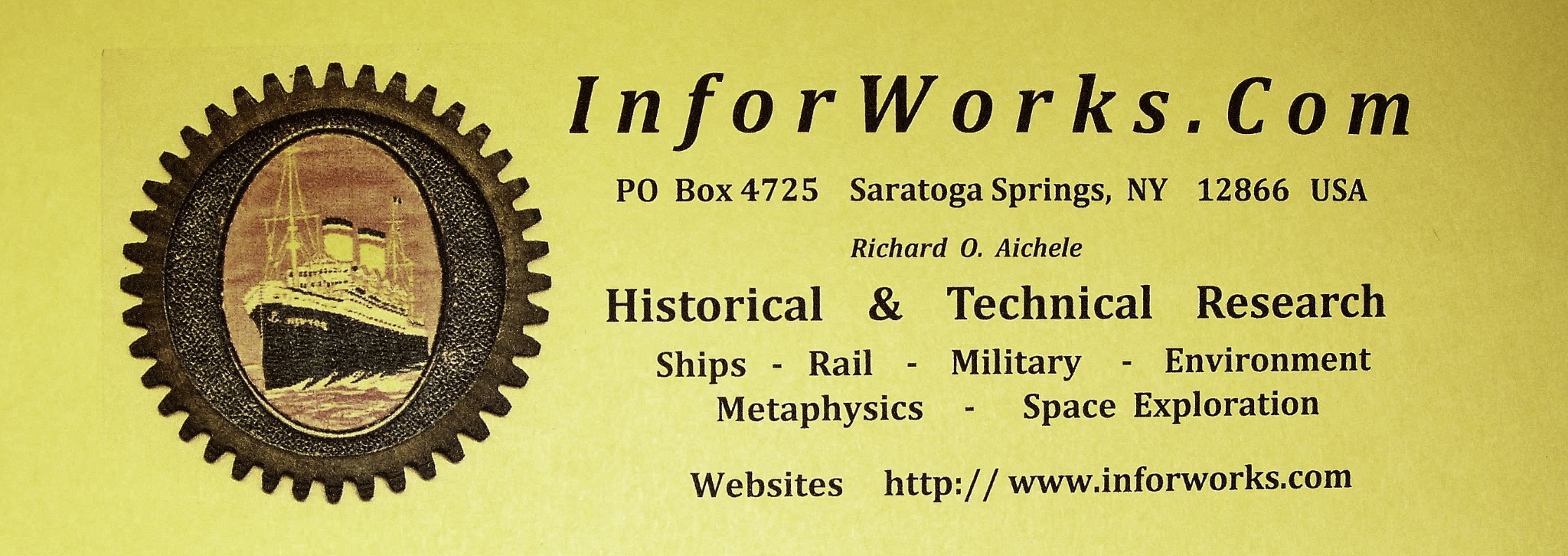
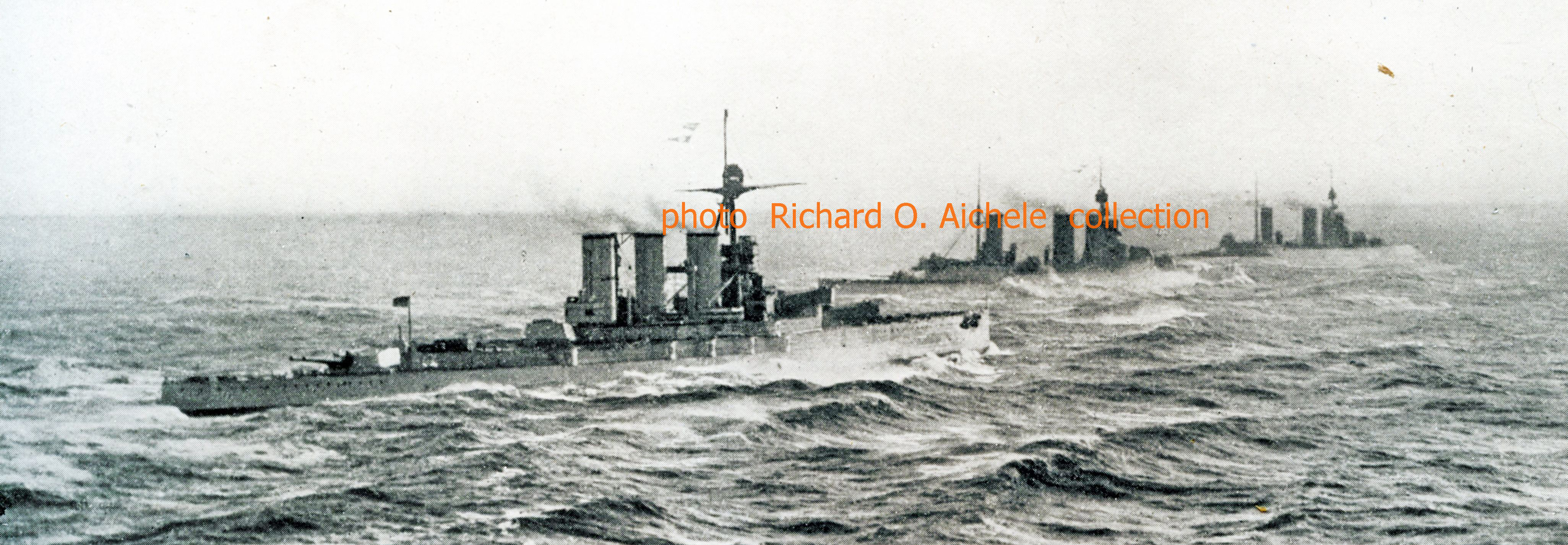
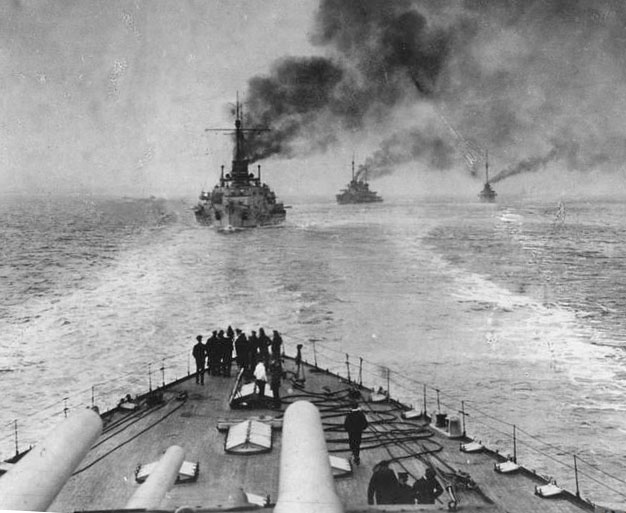

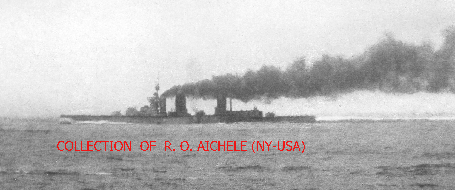
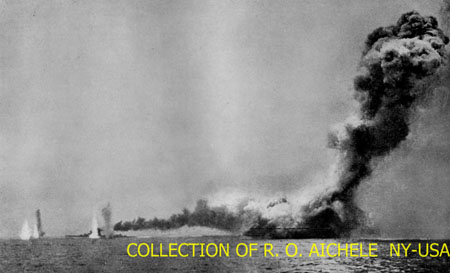
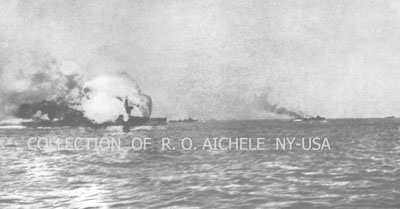
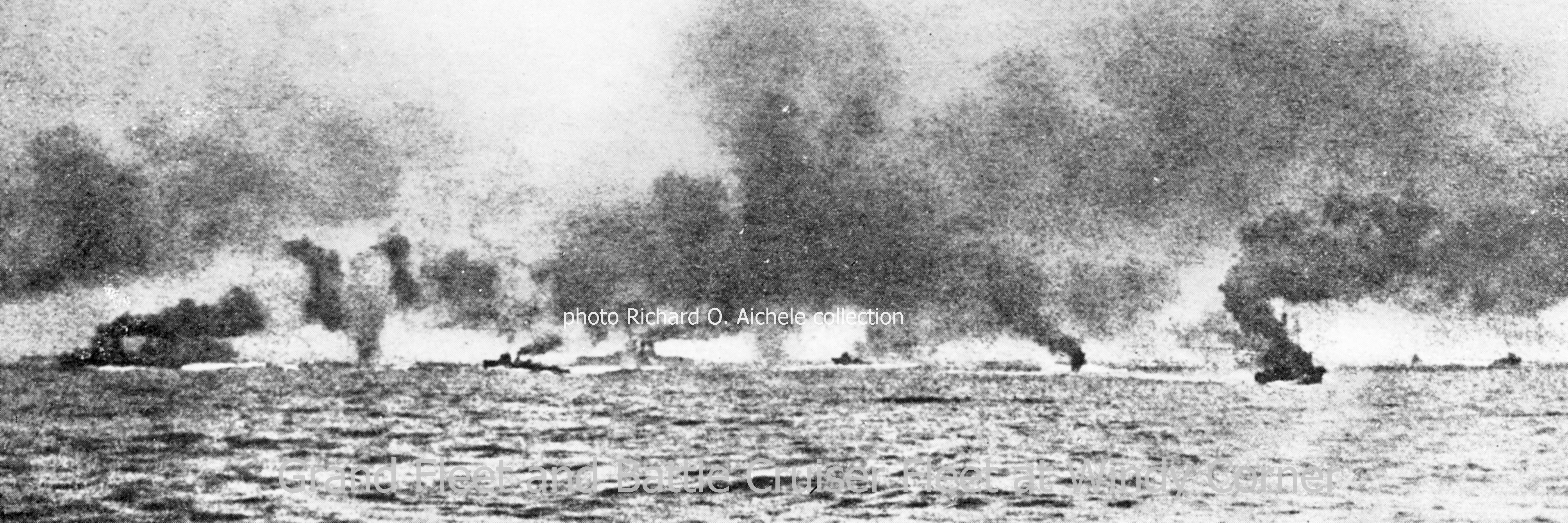
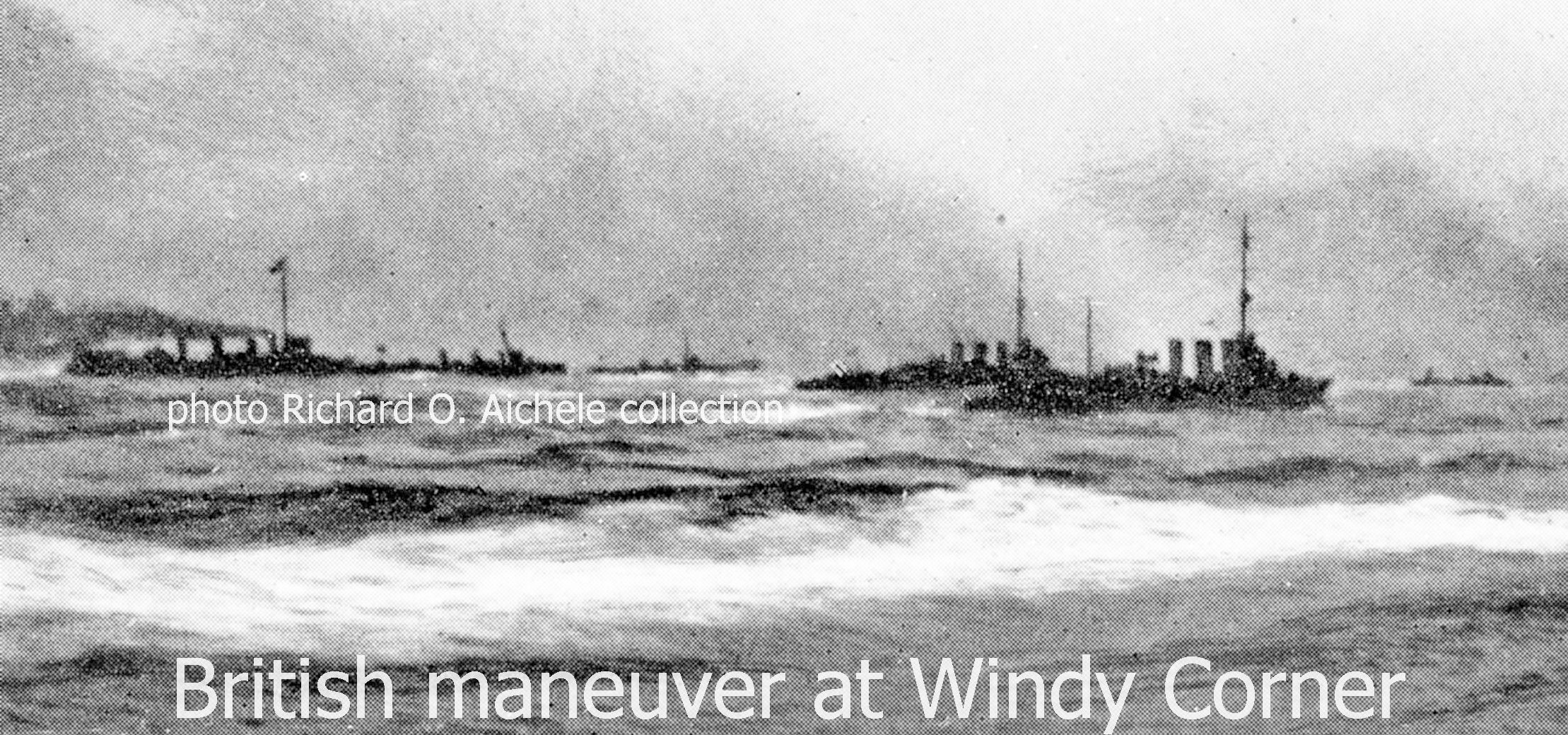 Windy Corner was the junction of the Grand Fleet with the Battle Cruiser Fleet. According to one of the British Fleet's light cruiser officers, "Apart from he risk and excitement of fifteen or twenty large ships and thirty or forty small ships all converging on to a point from every direction, the Germans were concentrating a heavy fire into the "brown" of the turning point so that the whole ocean was torn up by shell splashes and the noise was terrific. Every ship was steaming at high speed and the majority of them were vigorously replying to the German fire by firing their own broadsides over the heads of any light craft that lay between them and the enemy.
Windy Corner was the junction of the Grand Fleet with the Battle Cruiser Fleet. According to one of the British Fleet's light cruiser officers, "Apart from he risk and excitement of fifteen or twenty large ships and thirty or forty small ships all converging on to a point from every direction, the Germans were concentrating a heavy fire into the "brown" of the turning point so that the whole ocean was torn up by shell splashes and the noise was terrific. Every ship was steaming at high speed and the majority of them were vigorously replying to the German fire by firing their own broadsides over the heads of any light craft that lay between them and the enemy.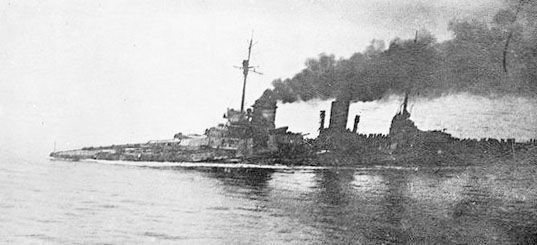 The crew aboard the heavily damaged SMS Seydlitz (photo left) fought to keep their ship afloat. She was finally unable to maintain speed with the other battle cruisers due to the sea water pressure on internal bulkheads and was ordered to head for port independently with a destroyer escort. Because of the heavy flooding, the bow was deep in the water causing the SMS Seydlitz to go aground at Horns Reef resulting in more flooding. She was refloated but by 14.30-hour that afternoon only her buoyant broadside torpedo room kept her afloat. The arrival of two pump ships allowed the journey to continue to the entrance to Jade Bay by 2 June, where she was briefly beached and finally sailed into the home port of Wilhelmshaven.
The crew aboard the heavily damaged SMS Seydlitz (photo left) fought to keep their ship afloat. She was finally unable to maintain speed with the other battle cruisers due to the sea water pressure on internal bulkheads and was ordered to head for port independently with a destroyer escort. Because of the heavy flooding, the bow was deep in the water causing the SMS Seydlitz to go aground at Horns Reef resulting in more flooding. She was refloated but by 14.30-hour that afternoon only her buoyant broadside torpedo room kept her afloat. The arrival of two pump ships allowed the journey to continue to the entrance to Jade Bay by 2 June, where she was briefly beached and finally sailed into the home port of Wilhelmshaven.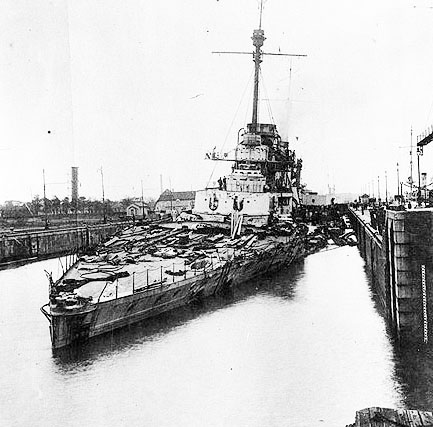 Finally home from the sea.
Finally home from the sea. 



